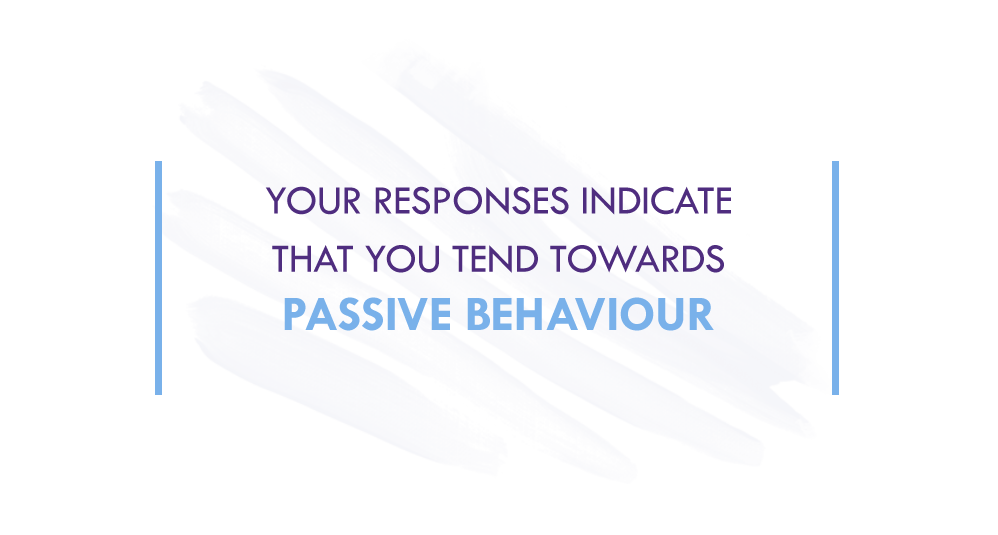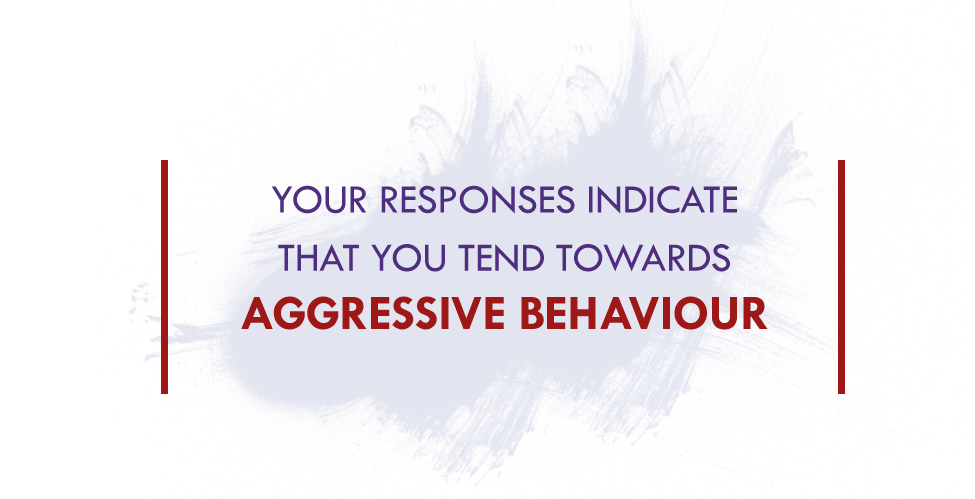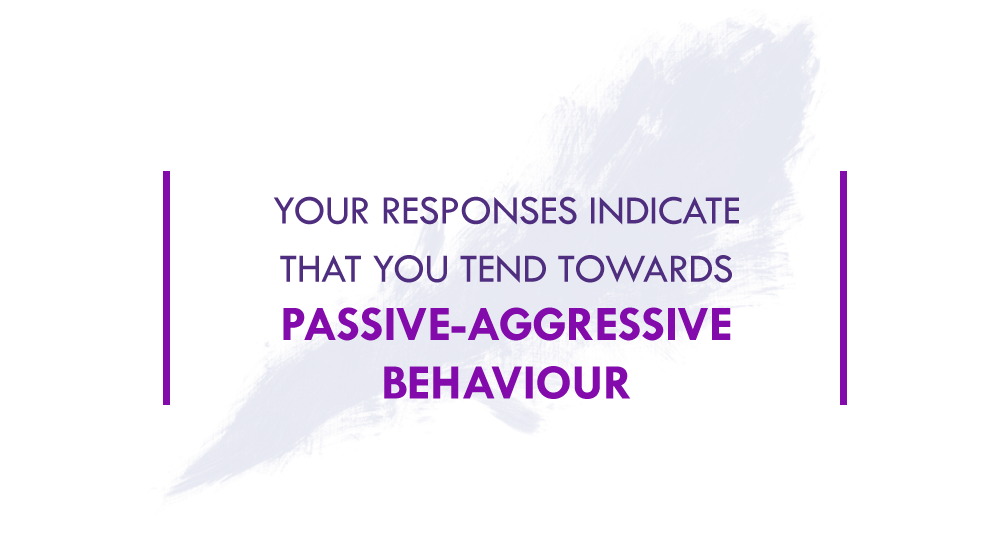Assertiveness Questionnaire
Assertiveness is the ability to express oneself in a way that is honest, direct and appropriate, whilst respecting the opinions, wishes and feelings of others. Assertive people stand up for their own rights while respecting the rights of others. They strive for a balance between their own needs and the needs of others. They speak openly and honestly, using positive body language and eye contact. Their mantra is “I’m OK, you’re OK.”
People who aren’t assertive tend to fall into three camps:
- Passive
- Aggressive
- Passive-aggressive
Though it’s not uncommon to switch between these. Learn to recognise the difference between negative and positive behaviours – you owe it to yourself and your future happiness, success and wellbeing.
Use this free, quick and easy tool to see how you shape up and what you could do to improve.
1. Someone interrupts your work for a chat. Do you:
2. You’re in a restaurant and the service is really poor. The bill comes with an added 20% tip. Do you:
3. You’re in a queue at music festival and couple of people push in. Do you:
4. You’ve spent quite a while preparing for an important meeting and this goes well. The CEO praises your presentation. Do you:
5. You bought a new outfit from an expensive designer boutique. You wear it once and a large hole appears in a seam. Do you:
6. A colleague in another location borrowed money and keeps forgetting to return it. You need it as you have some additional expenses to pay next month. Do you:
7. You’re asked to attend a networking event and arrive to find you don’t know anyone. Do you:
8. You’re away on holiday and return to find that an unpopular decision has been made which affects your department. Do you:
9. You’re responsible for ensuring the company’s clear desk policy is adhered to. One colleague is untidy and leaves mess all over his desk. Do you:
10. You’re sitting at the traffic lights and the learner driver in front stalls. Do you:
11. You and a colleague, who joined only last year, apply for promotion and she succeeds in securing the role. Do you:

Passivity is when people fail to express their feelings, wants and desires, instead putting others first. Passive people often communicate in an apologetic, indirect or even needy way; frightened of upsetting others and what they will think. They give in to others’ demands, displaying weak body language, avoiding eye contact. They can lack direction and allow themselves to be directed by others. Their mantra is “You’re OK, I’m not OK”.
The first step in becoming more assertive is to resolve not to let passivity take over. This requires real resolve and some thinking time around identifying your passive behaviours and their triggers, then learning how more assertive behaviours could be substituted. Then force yourself to do it. Start small and build as you go. If something isn’t acceptable, let people know in the right way – keeping the peace is not sensible if the situation isn’t improving. Practice more assertive, emotionally intelligent strategies to deal with your ‘trigger’ situations – role-play it in the mirror, with a friend, even with your cat.
Look back at any question where you didn’t respond with a ‘c’ and think about how you could modify your behaviour towards the ‘c’ response.

Aggressiveness is where people forcefully put themselves and their own needs ahead of others. They are often loud and intimidating, controlling and demanding. Body language is strong and hostile. All of this can have a detrimental effect on those around them. Their mantra is “I’m OK, you’re not OK (and I don’t really care)”.
Aggressive people need to work on their emotional intelligence so as to become more empathetic with the rights, wants and needs of others. A first step would be to identify your unacceptable behaviours and what triggers them. If these aren’t obvious then (non aggressively) ask a friend, colleague or family member how your aggression manifests itself. Then work out ways to change your behaviour and learn to control this. It may be you’ll need to let off steam in other ways, for example in the gym. If a trigger situation arises, remove yourself, even for a short visit to the bathroom, while you calm down, gather your thoughts and work out your response. Practice more assertive, emotionally intelligent strategies to deal with your trigger situations – role-play it in the mirror, with a friend, even with your cat.
Look back at any question where you didn’t respond with a ‘c’ and think about how you could modify your behaviour towards the ‘c’ response.

Assertiveness is the ability to express yourself in a way that is honest, direct and appropriate while respecting the point of view and feelings of others. Assertive people stand up for their rights while appreciating the rights of others. They are generally confident and emotionally intelligent. They look for balance between their own needs and the needs of others. They speak openly and honestly, using positive body language and eye contact. Their mantra is “I’m OK, you’re OK.”
Look back at any question where you didn’t respond with a ‘c’ and think about how you could modify your behaviour towards the ‘c’ response.

Passive-aggressiveness is often the result of true feelings being hidden. This might be because someone feels unappreciated, insecure or generally unhappy. Their mantra is “I’m not OK, you’re not OK”.
It’s important to note that defensive, sulky or vindictive behaviour is always negative and counterproductive to the person doing it. Remember you cannot control what happens around you though you can always control your response. So make it your mission to be positive and proactive. Think about how much more effective an honest, sympathetic and tactful approach would be. If passive-aggressive behaviour prevails, think about the reasons behind your feelings of discontent and work out reasonable solutions. If something isn’t acceptable, let people know in the right way – keeping the peace is not sensible if the situation isn’t improving. Practice more assertive, emotionally intelligent strategies to deal with your ‘trigger’ situations – role-play it in the mirror, with a friend, even with your cat.
Look back at any question where you didn’t respond with a ‘c’ and think about how you could modify your behaviour towards the ‘c’ response.
Remember, you have the right to:
- Ask for what you want (realising that the other person has the right to say 'no').
- Express your feelings, opinions and beliefs
- Make your own decisions and cope with the consequences
- Say 'yes' and 'no' for yourself
- Change your mind
- Say "I don't understand"
- Choose whether or not to get involved in the issues of someone else
- Make mistakes
- Be alone and to be independent; privacy and your own space
- Be successful and acknowledge it
So maybe it’s time to change and become assertive. Click here for my top tips to start you off
